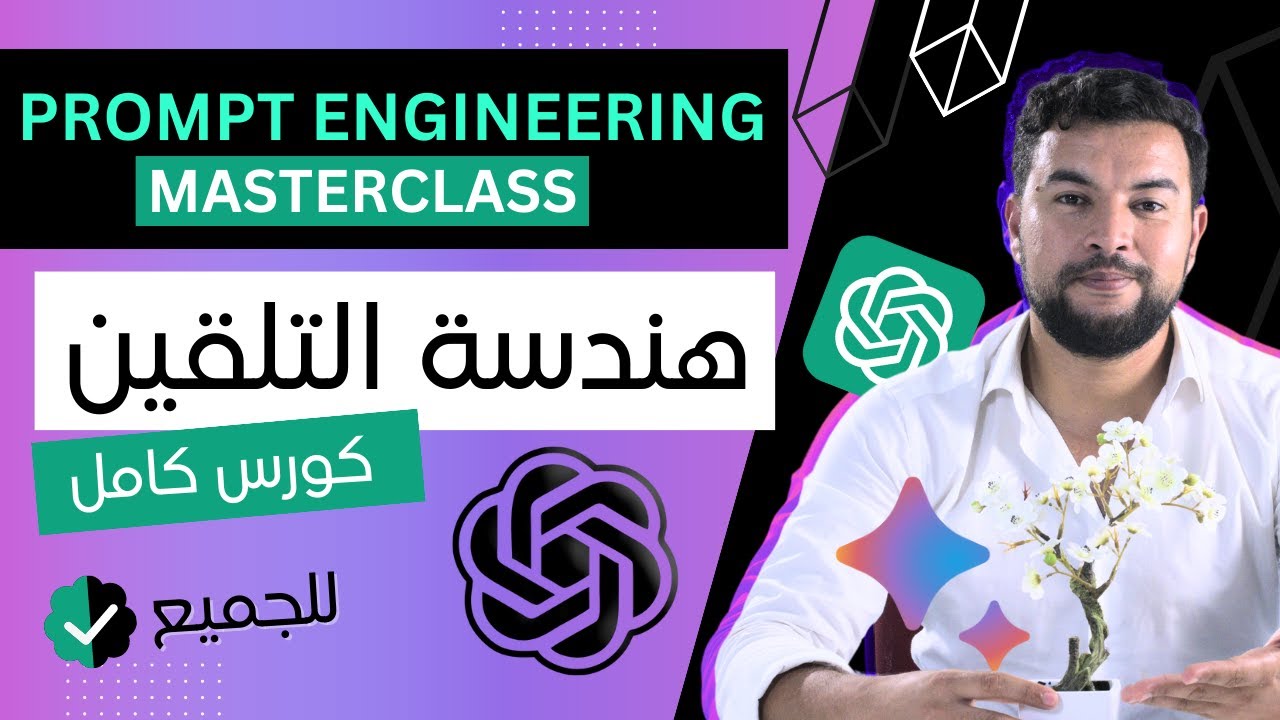Ceramic 3D Printing and Metal Casting Combine to Make Complex Parts
Summary
TLDRتتضمن التكنولوجيا ال3D الطباعة ال拂طاسية لإنتاج أجزاء معدنية معقدة بشكل فعال وتكلفة مقارنة بتقنيات التصنيع التقليدية. في مقال مصور في أрисتو كاست في ألمونت، ميشيغان، يستخدم 3D الطباعة ال拂طاسية لإنشاء قواعد 3D مطبوعة على أقمشة ال拂طاسة، مما يتيح لإنشاء أجزاء معقدة وداخلية بتكلفة أقل. يتضمن العملية التنظيف والتنظيف الشهي والتصنيع النهائي للأجزاء ال拂طاسية، مما يساعد في تقليل التكاليف ويضمن جودة الإنتاج.
Takeaways
- 🌐 التصنيع ال月加入 لتصنيع العناصر الメتال ال月加入 يتيح تحقيق الأشكال الداخلية المعقدة للأجزاء.
- 🔍 يمكن للتقنيات القائمة على ال3D الطباعة أن تتجاوز قدراتها المتوقعة في الإنتاج.
- 🏭 يتم التصوير في مورunfold مfacturing في ألمونت، ميشيغان.
- 💡 يتم التجربة في استخدام الطباعة ال3D لمساعدة في التصنيع بالنحيفة.
- 📈 يستخدم عملية P.I.C.S. (الغشاء الصناعي ال打好) لطباعة القشرة ال керамиكية.
- 🔄 يتيح التصميمات ال3D الطباعة المصنوعة من الألياف ال доступة على نطاق واسع لتكوين الأجزاء.
- 💰 يمكن أن يؤدي هذا إلى إنتاج الأجزاء الメتال الカラهية بتكلفة أقل.
- 🧼 يتم تفريغ القشرة ال3D الطباعة الكراميكية من خلال عملية التنظيف.
- 🛁 يتم غسل القشرة بعد الطباعة بالألكوهول المشتعل.
- 🔥 تتم تسخين القشرة الكيراسية بعد التنظيف والتنظيف.
- 🌀 يتم تجميع القشرة الكيراسية مع الشراشير لتحضيرها للفرس.
Q & A
What is the main advantage of metal additive manufacturing in terms of part geometries?
-Metal additive manufacturing is capable of achieving complex internal part geometries that no other process can achieve.
What is the P.I.C.S. process used by Aristo Cast?
-The P.I.C.S. (Printed Investment Casting Shell) process is a method that uses 3D printed ceramic shells to create intricate, curving internal geometries of components made from widely available alloys used in casting.
How does the P.I.C.S. process potentially reduce costs compared to traditional metal additive manufacturing?
-The P.I.C.S. process can potentially result in an intricate metal part at a lower cost than is often possible with traditional metal additive manufacturing processes, by utilizing more accessible and cost-effective materials and methods.
What is the role of 3D printed ceramic shells in the P.I.C.S. process?
-The 3D printed ceramic shells are used to create the complex internal geometries of the components. They are later leached out to remove them from the part.
What are the steps involved in the P.I.C.S. process after 3D printing the ceramic shells?
-After 3D printing, the ceramic shells are cleaned with isopropyl alcohol, soaked in a tank for loose slurry removal, and then sintered.
How are the ceramic shells attached for the P.I.C.S. process?
-The ceramic shells are attached to a sprew, which is a type of handle or support structure used in casting.
What is the purpose of dipping the sprew and shell assembly into ceramic slurry?
-Dipping the assembly into ceramic slurry helps to create additional layers around the 3D printed ceramic shells, building up the investment casting shell.
How long does it typically take to complete a build of P.I.C.S. shells?
-A build of P.I.C.S. shells can take about 10 hours.
What is the primary material used in the 3D printing step of the P.I.C.S. process?
-The primary material used in the 3D printing step is ceramic, which is also used in the subsequent slurry coating step.
How does the P.I.C.S. process contribute to the overall goal of manufacturing complex metal parts?
-The P.I.C.S. process contributes to manufacturing complex metal parts by enabling the creation of intricate internal geometries that are not feasible with conventional casting methods, while potentially reducing costs and material waste.
Outlines
💡 Innovations in Metal Additive Manufacturing
This paragraph discusses the capabilities of metal additive manufacturing, particularly in achieving complex internal part geometries that traditional processes cannot replicate. It introduces the concept that some existing processes, like 3D printing, may be more versatile than previously thought. The narrative takes us to Aristo Cast in Almont, Michigan, where they are experimenting with an aid to investment casting using 3D printing of ceramic through their P.I.C.S. (Printed Investment Casting Shell) process. This process allows for the creation of intricate, curving internal geometries of components made from widely available alloys used in casting, potentially leading to the production of complex metal parts at a lower cost than other additive manufacturing processes in metal. The paragraph also outlines the steps involved in the P.I.C.S. process, including the 3D printing, cleaning, sintering, and assembly of the ceramic shells, and the final preparation for the pour.
Mindmap
Keywords
💡Metal additive manufacturing
💡3D printing
💡Investment casting
💡Ceramic shells
💡P.I.C.S. process
💡Alloys
💡Cost-effectiveness
💡Leaching
💡Sintering
💡Sprew
💡Pouring
Highlights
Metal additive manufacturing can achieve complex, internal part geometries that other processes cannot.
Some existing processes might be more capable than previously thought, thanks to advancements in 3D printing.
The metal part discussed was not 3D printed but was made through investment casting.
Aristo Cast in Almont, Michigan, is experimenting with an aid to investment casting using 3D printing.
The P.I.C.S. process, or Printed Investment Casting Shell, utilizes 3D printed ceramic shells for intricate component designs.
Ceramic shells 3D printed on Admatec's system allow for complex, curving internal geometries of components.
These components can be made from widely available alloys commonly used in casting.
The result of this process could be intricate metal parts at a lower cost than traditional additive manufacturing processes.
The 3D printed ceramic shell is leached out to be removed, as part of the process.
The P.I.C.S. shells' build took approximately 10 hours to complete.
After 3D printing, the shells are cleaned with isopropyl alcohol.
The shells are soaked in a tank for an extended period for loose slurry removal.
Sintering is a subsequent step in the process after cleaning and soaking.
The ceramic shells are attached to a sprew for further processing.
The sprew with the shell assembly is dipped into a ceramic slurry made from the same ceramic used in 3D printing.
The slurry-coated assembly dries before it's ready for the pour.
Transcripts
Metal additive manufacturing is capable of achieving complex
internal part geometries no other process can achieve, sort of.
Some of those existing processes might be more capable than we think thanks to 3D printing.
This was not 3D printed, this metal part.
This component was investment cast.
I'm at Aristo Cast in Almont, Michigan.
Aristo Cast is experimenting with an aid to investment casting using 3D printing.
Using 3D printing of ceramic. Through their P.I.C.S.
process, Printed Investment Casting Shell,
Ceramic Shells 3D printed on this system from Admatec
allow for complicated, intricate, curving internal geometries of components
made from accessible widely available alloys used in casting.
The result potentially is an intricate metal part at lower cost
than is often possible with additive manufacturing processes in metal.
The 3D printed ceramic shell is leached out to be removed.
Here are other steps in the process.
What the process looks like.
This build of P.I.C.S.
shells took about 10 hours.
After 3D printing, the shells are cleaned with isopropyl alcohol.
They are also soaked in a tank for quite a while for loose slurry removal.
Then comes sintering.
The ceramic shells are then attached to a sprew.
That assembly on the sprew is then dipped into a ceramic slurry.
The same ceramic used in 3D printing.
It dries, then it's ready for the pour.
5.0 / 5 (0 votes)





